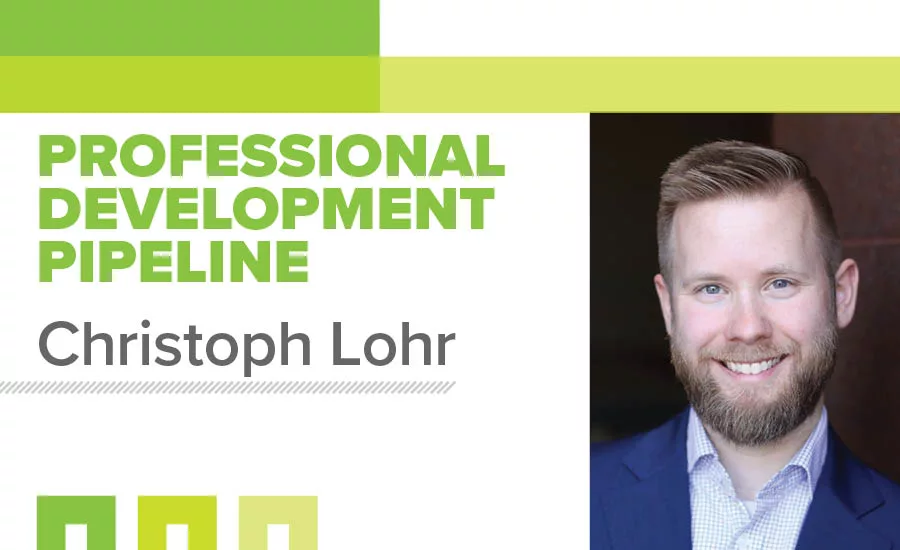Christoph Lohr: Strategy for engineering firms
Strategic planning is important for businesses and individuals.

“Because knowledge rapidly deteriorates unless it is used constantly, maintaining within an organization an activity that is used only intermittently guarantees incompetence,” said Peter Drucker.
In my column from September, we defined strategy as a set of cohesive actions or plans that an organization does. If plans or actions are not cohesive, then the strategy is disjointed and can lead to frustration, especially among star performers. We also spoke about competitive advantage in the form of differentiator or low-cost. Let’s introduce another resource: “The Marketing Handbook for the Design and Construction Professional (Third Edition).”
Specifically, let’s look at chapter 2.3 “Focus and Expertise: Establishing Clear Direction for the Firm is Key to Success.” More or less, it’s an entire chapter dedicated to a firm establishing its overall strategy. In the above chapte,r the author, Jack Reigle, discusses the SPARKS Framework. SPARKS is one way to define your firm, although I believe there are many other ways or choices. That being said, what is helpful about SPARKS is the mindset it creates in making intentional choices, such as saying “yes” or “no” to opportunities or directions. Mr. Reigle mentions in this chapter the results of not having a clear strategy: “Competing on price; unreasonable client expectations in schedule and budget; not making the profit we deserve; not getting and keeping talented people; and lack of leadership and leadership transition.” All of these are signs of incompetence — as the dictionary defines: “the inability to do something successfully” — as Peter Drucker indicated more than 50 years ago, by not being focused an organization will be incompetent.
In that light, Mr. Reigle presents 6 MEP firm “character” types along a spectrum: Einstein, niche expert, market partner, community leader, orchestrator or builder. The chapter goes into details about how each one of these character types answering the following three strands of questions in regards to their strategic system:
-
Getting work: What is the firm known for? (Sales message promotional strategy, geographic reach, best fees, etc.);
-
Doing work: What are the firm’s targets? (Deep expertise, staff mix, project management, learning, etc.); and
- Organizing work: How does the firm organize for business? (Ownership, investments, offices, information systems, etc.)
While the specific character types offer an interesting perspective, let’s focus on the overall point the chapter makes: It is important that these strands are answered cohesively. For example, Company ABC traditionally has done very complex, intricate project types, and wants to add high volume, repeat-type work to help stabilize its revenue. The marketing group feels very confident in its abilities on how it will get the work. But even if this is the case, the company may ask itself some of the following questions (with answers afterwards in parenthesis).
Doing the work:
- Does our existing staff have the ability and desire to do the work? (Yes to ability, as projects are less challenging, and no to desire, as most staff are not engaged by the high volume work type).
- Do our existing PMs have the personality and experience to do the work? (No and no, existing PMs feel better about low-volume projects rather than managing a whole program); and
- Can we learn how to do this work through our usual means? (No — normally, the firm selects and pays for technical stars to go to various conferences to learn, high volume work would require establishing an internal training program, further exasperating resources).
Organizing the work:
- Do our current internal investments align with the new project work? (No, currently we invest in star technical staff, would need to invest more in PMs);
- Are we recruiting the right staff? Do we offer the right benefits? (Most likely, not. We have been focused on hiring experienced staff with good reputation, but may need to invest more into college recruiting); and
- Is cross team collaboration able to handle many moving projects? (No, company has traditionally struggled to share resources across projects).
Clearly, in this case, Company ABC should not pursue this work type, even if it has the ability to win it. But what if only one of the above questions were answered negatively? In that case, that question needs further evaluation. For example, what if most of the 9/10 staff would be open to high volume work, but 1/10 staff did not? Whether the 10% of the staff encompassed star performers or not has a big impact on the decision to move forward. Just because an organization has the ability to win the work, doesn’t mean they have the means of doing it; just because you can, doesn’t mean you should.
This kind of rigorous decision-making often seems absent at a number of firms. The strategic planning process, if it happens, is often dominated by discussions of revenue, new markets (whether based on geography or building type), or what companies to acquire. But revenue is just a metric. New markets can be a good or bad fit for the existing organization. And about 90% of mergers and acquisitions fail. Engineers are most likely much better at thinking about details rather than systems in their entirety, but it is a skill that must be learned. The companies that do will reap the greatest rewards.
However, this kind of evaluation is not just for company leaders and managers, every individual should do this. Are you incredibly stressed at work and have a hard time pinpointing why? Perhaps it is an alignment problem, and your motivators and career ambitions don’t align with the direction (or lack thereof) of the organization you belong to. It may be a great time to speak up and show off your strategic thinking skills with your boss. Or, it may be time to get out, and start the process of finding the place that better aligns with your ambitions, vision and motivators.
Looking for a reprint of this article?
From high-res PDFs to custom plaques, order your copy today!









